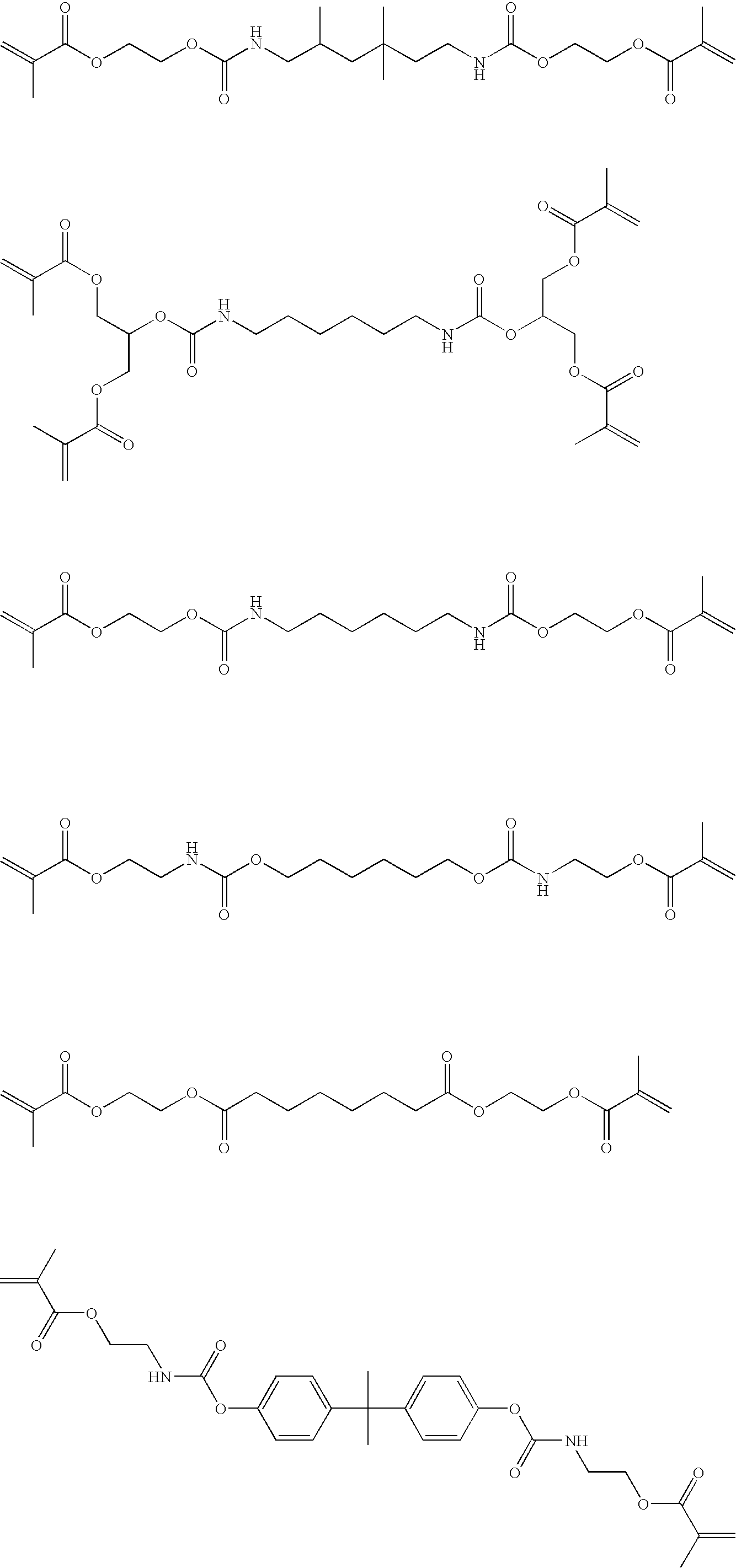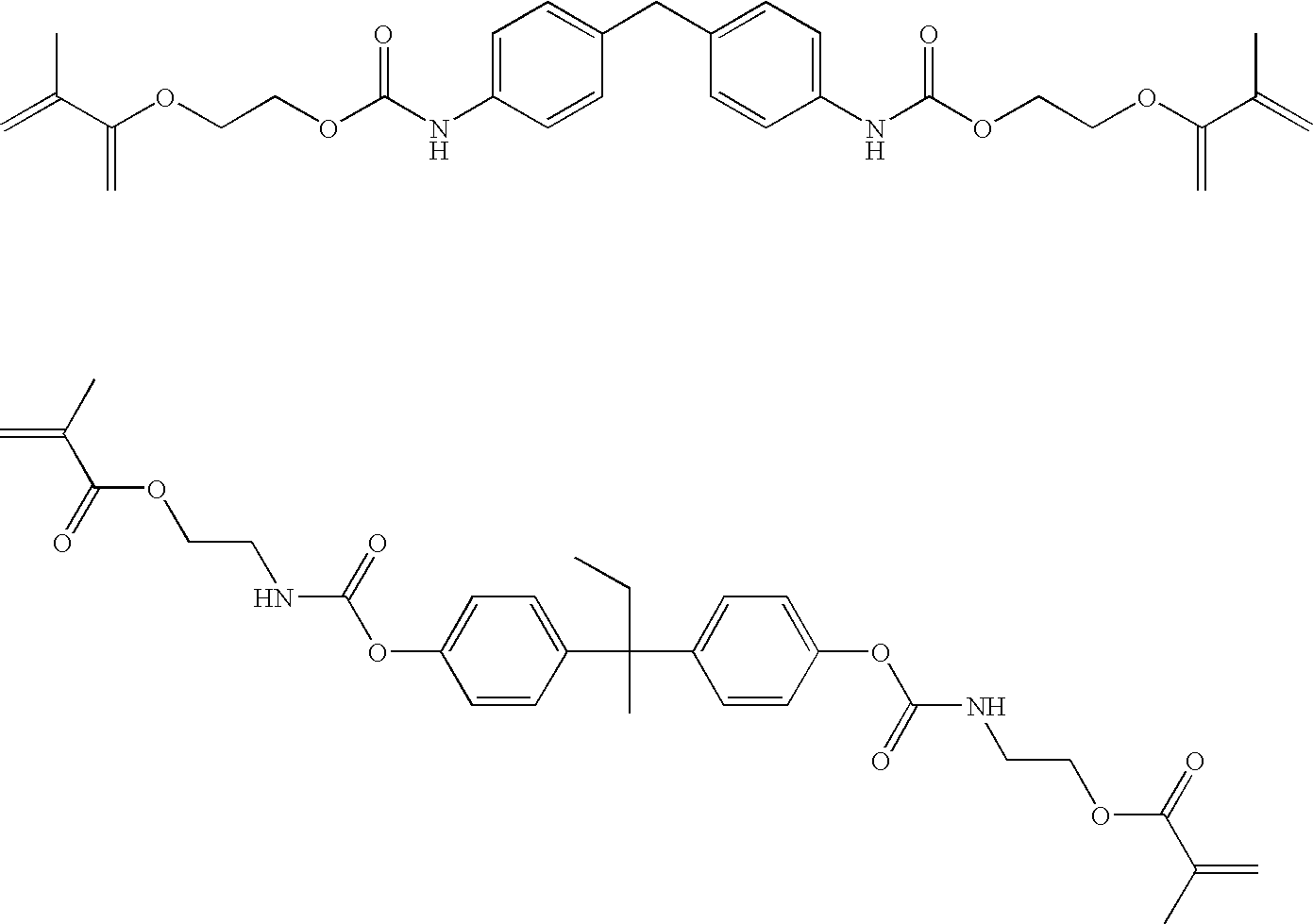Resin composition for laser engraving, resin printing plate precursor for laser engraving, relief printing plate and method for production of relief printing plate
- Summary
- Abstract
- Description
- Claims
- Application Information
AI Technical Summary
Benefits of technology
Problems solved by technology
Method used
Image
Examples
example 1
[0280]In a three-necked flask equipped with a stirring blade and a condenser were put 10 g of Landy PL-2000 (emulsion (aqueous dispersion) of polylactic acid, produced by Miyoshi Oil and Fat Co., Ltd.) as the binder (A), 40 g of Gosenal T-215 (PVA derivative, produced by Nippon Synthetic Chemical Industry Co., Ltd.) as the binder (A′), 0.75 g of Ketjenblack EC600JD (produced by Lion Corp.) as the light-to-heat conversion agent (D), 20 g of diethylene glycol as the plasticizer (F) and 35 g of water and 12 g of ethanol as the solvents and the mixture was heated at 70° C. for 120 minutes with stirring to dissolve the polymer. To the solution were further added 28 g of the compound shown below which was an ethylenically unsaturated monomer as the polymerizable compound (C) and 1.6 g of Irgacure 184 (α-hydroxyketone, produced by Ciba-Geigy Corp.) as the polymerization initiator (E) and 1.0 g of magnesium oxide heavy (produced by Wako Pure Chemical industries, Ltd.) as the oxy compound (B...
example 2
[0285]The same procedures were performed as in Example 1 except for changing the magnesium oxide to calcium oxide (produced by Wako Pure Chemical industries, Ltd.) as the oxy compound (B).
example 3
[0286]The same procedures were performed as in Example 1 except for changing the magnesium oxide to Neostan U-600 (a mixture of bismuth tris(2-ethylhexanoate) and 2-ethylhexanoic acid, produced by Nitto Kasei Co., Ltd.) as the oxy compound (B).
PUM
| Property | Measurement | Unit |
|---|---|---|
| Thickness | aaaaa | aaaaa |
| Angle | aaaaa | aaaaa |
| Wavelength | aaaaa | aaaaa |
Abstract
Description
Claims
Application Information
 Login to View More
Login to View More - R&D
- Intellectual Property
- Life Sciences
- Materials
- Tech Scout
- Unparalleled Data Quality
- Higher Quality Content
- 60% Fewer Hallucinations
Browse by: Latest US Patents, China's latest patents, Technical Efficacy Thesaurus, Application Domain, Technology Topic, Popular Technical Reports.
© 2025 PatSnap. All rights reserved.Legal|Privacy policy|Modern Slavery Act Transparency Statement|Sitemap|About US| Contact US: help@patsnap.com



